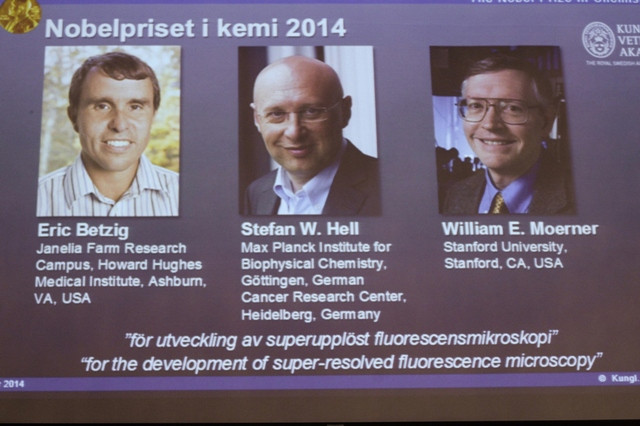Breakthrough in chemistry: Super-microscope earns trio 2014 Nobel prize
Research into Alzheimer’s, Parkinson’s expected to greatly benefit

Two Americans and a German won the 2014 Nobel Prize for Chemistry on Wednesday for laying the foundations of an ultra-powerful microscope that has exposed life at the molecular level. The tool has revolutionised research into diseases and drug design, the Nobel jury said, as it lauded Americans Eric Betzig and William Moerner, and Germany’s Stefan Hell.
The basis of the laureates’ work adds fluorescent molecules to a sample to be studied. A laser beam is directed at the sample to make the molecules glow, while a second laser beam quenches all fluorescence except for a tiny area of interest in the middle. As a result, objects as small as 20 nanometres are thrown into sharp relief.
Scientists can now observe the pathways of individual molecules inside living cells and see how molecules create synapses between nerve cells in the brain. “They can track proteins involved in Parkinson’s, Alzheimer’s and Huntington’s diseases as they aggregate,” the jury said. The technology, it added, had almost infinite possibilities.
All three scientists have followed up their work by applying it to medical research.
Hell has peered inside living nerve cells in order to better understand brain synapses, while Moerner has studied proteins in relation to Huntington’s disease and Betzig has tracked cell division inside embryos.
Published in The Express Tribune, October 9th, 2014.



















COMMENTS
Comments are moderated and generally will be posted if they are on-topic and not abusive.
For more information, please see our Comments FAQ